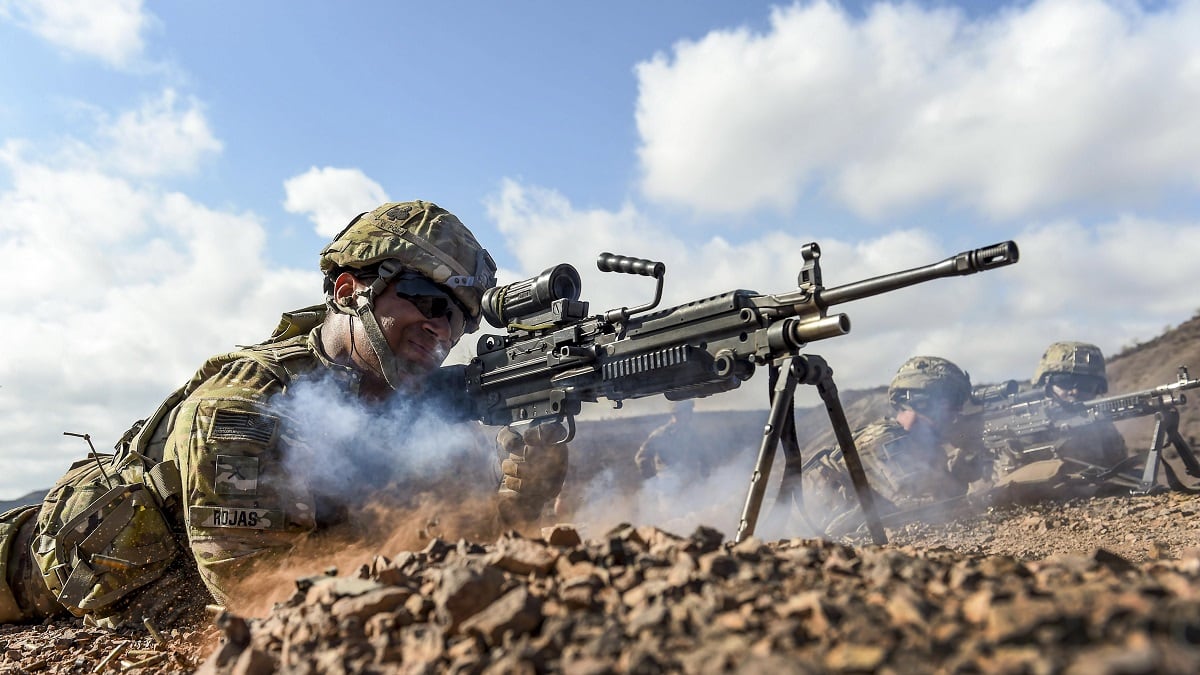The Army has been on the hunt for a new rifle for nearly 30 years to replace the rifles it currently fields in its infantry units.
Once upon a time, the service seemed to be close to adopting a new weapon, though the projects ultimately went nowhere.
But perhaps soldiers should be glad that the Army didn’t go with the infamous Heckler & Koch G11 or the futuristic XM29 OICW, or the ill-fated XM8 assault rifle.
Instead of a very conventional rifle firing the 5.56 NATO round, the Army is now rapidly progressing towards developing and field-testing a new weapon that can double the muzzle speeds of a bullet.
The primary advantages to this new (and no-so-new) technology are insane armor-penetration capabilities at close ranges, and next-level accuracy at longer ranges.
RELATED

Army Research Laboratory scientists and engineers boast an even greater feat -- instead of needing a massive weapon with external power sources, a la rail guns, this new rifle doesn’t require a barrel longer than 10 inches (for reference, an M4A1 carbine is typically outfitted with a 14.5 inch barrel).
All that’s needed to send bullets hurtling out at incredible speeds is a new propellant and a special receiver.
The idea for the new receiver and its internal assembly dates back to the 1930s where the German military developed “tapered-bore” (popularly referred to as “squeeze-bore” at the time) anti-tank guns that shot medium-caliber rounds.
This concept was revived and improved by the ARL by revamping the chamber of the gun to withstand higher pressures, while ensuring that the bullet casing can still be cycled out and a new round cycled in.
Because of the greater pressure coupled with the round’s already potent propellant, the bullet can achieve stunning muzzle velocities. In testing, the Army’s prototype, equipped with a 24 inch barrel, could produce muzzle velocities in excess of 4,600 to 5,750 feet per second.
According to the ARL, the ultimate goal for the new tapered-bore design is to downsize it to the point where it can be fielded on fully-automatic rifle-caliber guns the size of personal defense weapons which can be used in close quarters battle in addition to ranged combat.
Additionally, the ARL hopes that their 10 inch barrel version will be used with remotely-operated vehicles and drones, which minimize risk and boost survivability for soldiers in combat zones.
There’s no target date on when the technology will reach full maturity, but given the progress the ARL has already made with regards to refining the tapered-bore gun, it shouldn’t be much longer until the Army has prototypes in hand of what could be its next-generation rifle.
Ian D’Costa is a correspondent with Gear Scout whose work has been featured with We Are The Mighty, The Aviationist, and Business Insider. An avid outdoorsman, Ian is also a guns and gear enthusiast.





